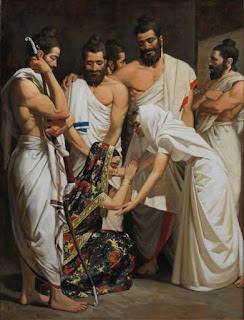NAME THE THINGS YOU LOVE - THE PHILE WORDS
Words play an important role in conveying feelings, ideas
and thoughts of a person to a great extent. Some words express the attitude and
likings of an individual and tell others more about him/her.
Every person has different type of interests that make
them unique. The love a person has towards some objects, places, habits or a
particular trait is explained in English language by the word “Phile”. There
are different types of philes according to the varierty of interest a person
have. So here we are listing out some of them and the one word used to call
such persons – The Phile Words
TYPES OF PHILES
· One who loves books - Bibiliophile
· One who loves solitude - Autophile
· One who loves moon - Selenophile
· One who loves music - Melophile
· One who loves sea - Thalassophile
· One who loves words - Logophile
One who loves tattoo - Stigmatophile
· One who loves sunset - Opacarophile
· One who loves to travel - Hodophile
· One who loves wine - Oenophile
· One who loves snow - Chionophile
· One who loves to spend time by just lying on bed - Clinophile
· One who loves to drink coffee - Javaphile
· One who loves flowers - Anthophile
· One who loves stars - Astrophile
· One who loves clouds - Nephophile
· One who loves trees - Dendrophile
· One who loves forest - Nemophile
· One who loves sun - Heliophile
· One who loves lakes - Limnophile
· One who loves lightning and thunder - Ceraunophile
· One who loves light – Photophile
· One who loves cemetery – Coimetrophile
· One who loves colour yellow - Xanthophile
· One who loves technology - Technophile
· One who loves night/darkness - Nyctophile
· One who loves colour blue - Caeruleaphile
· One who loves cinema -Cinephile
· One who loves dogs - Cynophile
· One who loves mountains – Orophile
· One who loves cats - Ailurophile
· One
who loves artifacts from past - Retrophile
· One
who loves baked foods - Pistoriophile
· One who loves to be in left / left – handed - Sinistrophile
· One who loves language - Linguaphile
· One who loves God – Theophile
· One who loves climb buildings – Stegophile
· One who loves to work – Ergophile
· One who loves teddy bear - Arctophile
· One who loves snakes – Ophiophoile
· One who loves to be in left / left – handed - Sinistrophile
· One who loves language - Linguaphile
· One who loves God – Theophile
· One who loves climb buildings – Stegophile
· One who loves to work – Ergophile
· One who loves teddy bear - Arctophile
· One who loves snakes – Ophiophoile
· One
who loves to nibble a woman’s earlobe – Cnynotikolobomassophile
· One who loves icons/ illustrations – Iconophile
· One who loves cheese - Turophile
· One who loves new things – Neophile
· One who loves eclipse - Umbraphile
· One who loves horses - Hippophile
· One who loves plants -Phytophile
· One
who loves foreign people / culture – Xenophile
· One who loves animals – Zoophile
· One who loves heat - Thermophile
· One who loves sound - Audiophile
· One who loves birds – Ornithophile
· One who loves chocolate – Chocophile
· One who loves knowledge - Sophophile
· One who loves animals – Zoophile
· One who loves heat - Thermophile
· One who loves sound - Audiophile
· One who loves birds – Ornithophile
· One who loves chocolate – Chocophile
· One who loves knowledge - Sophophile
























































